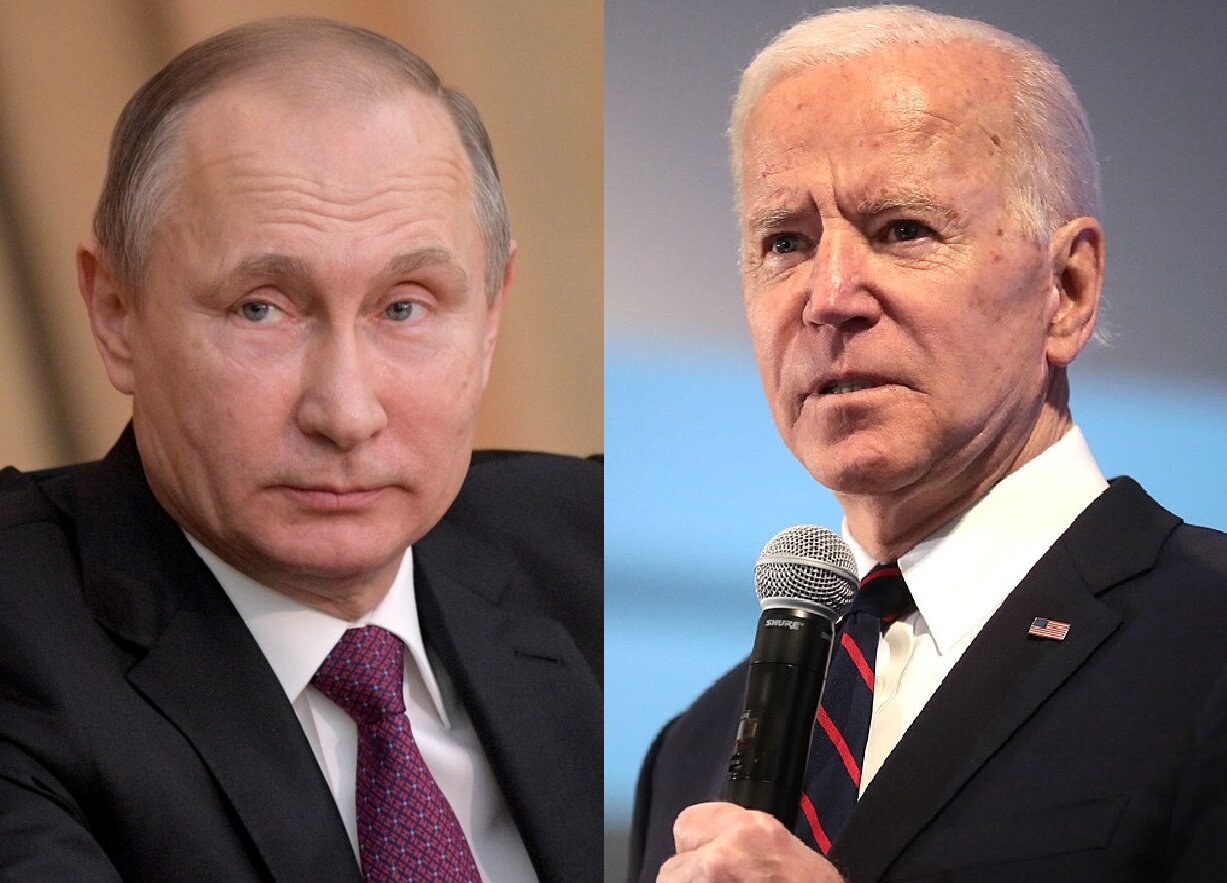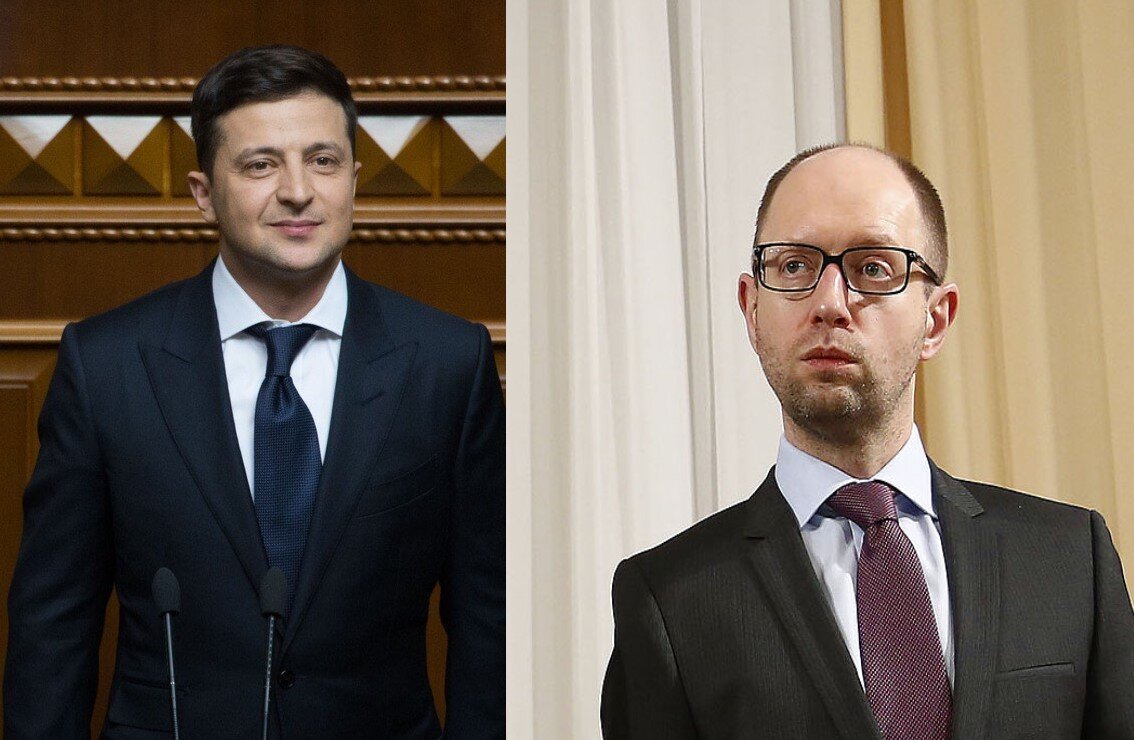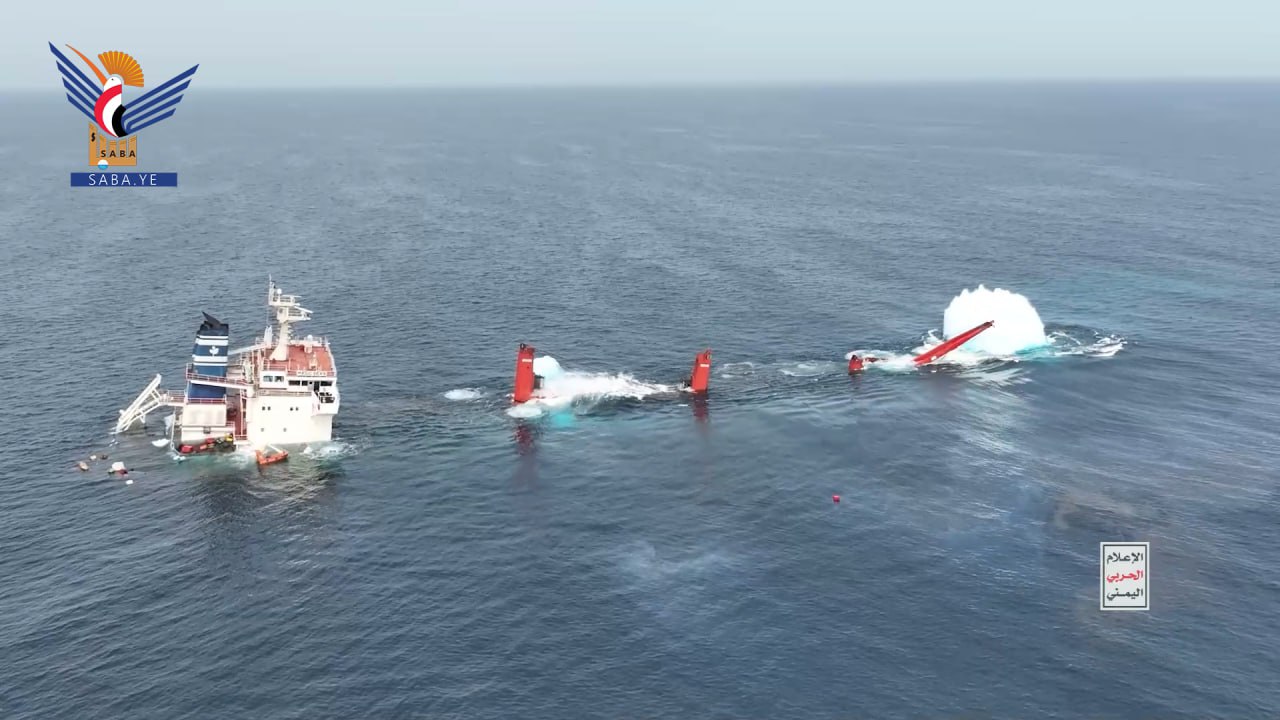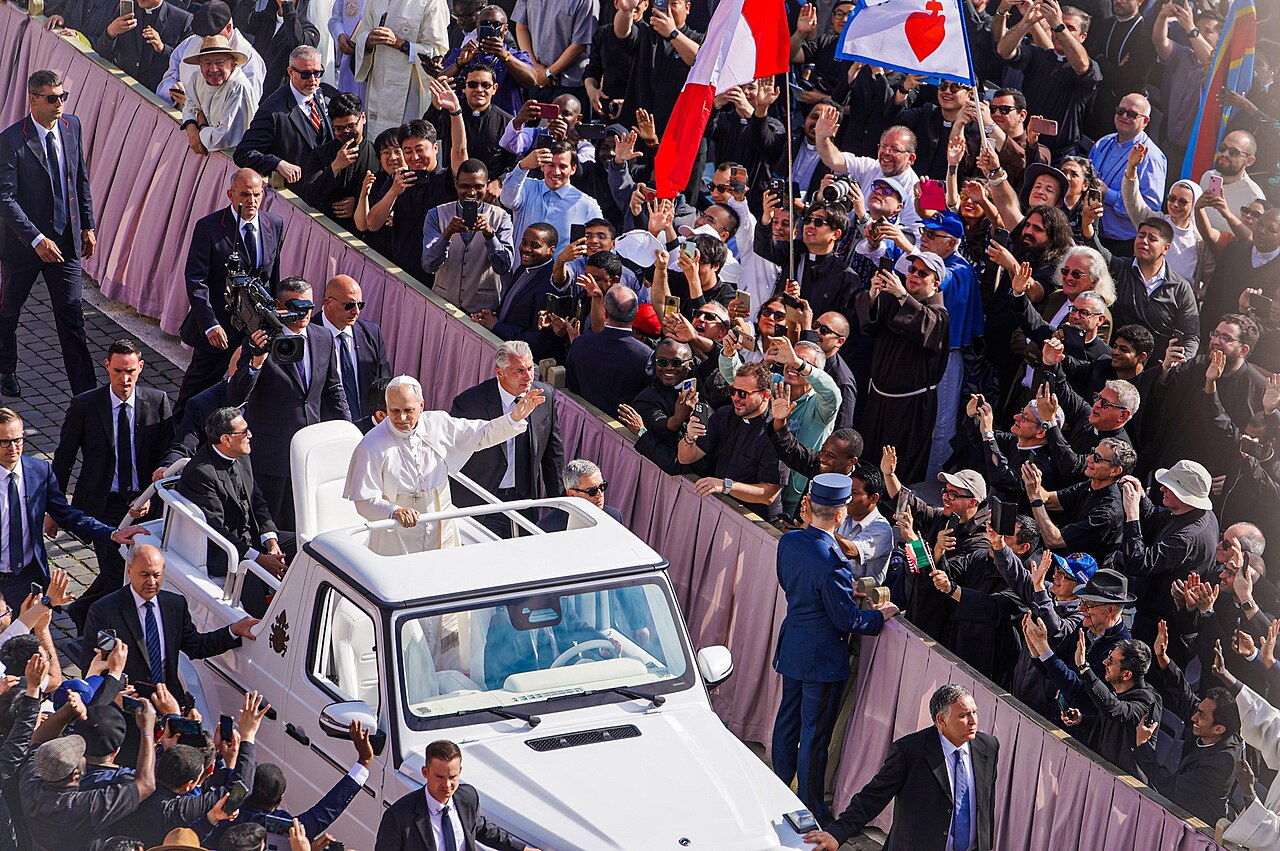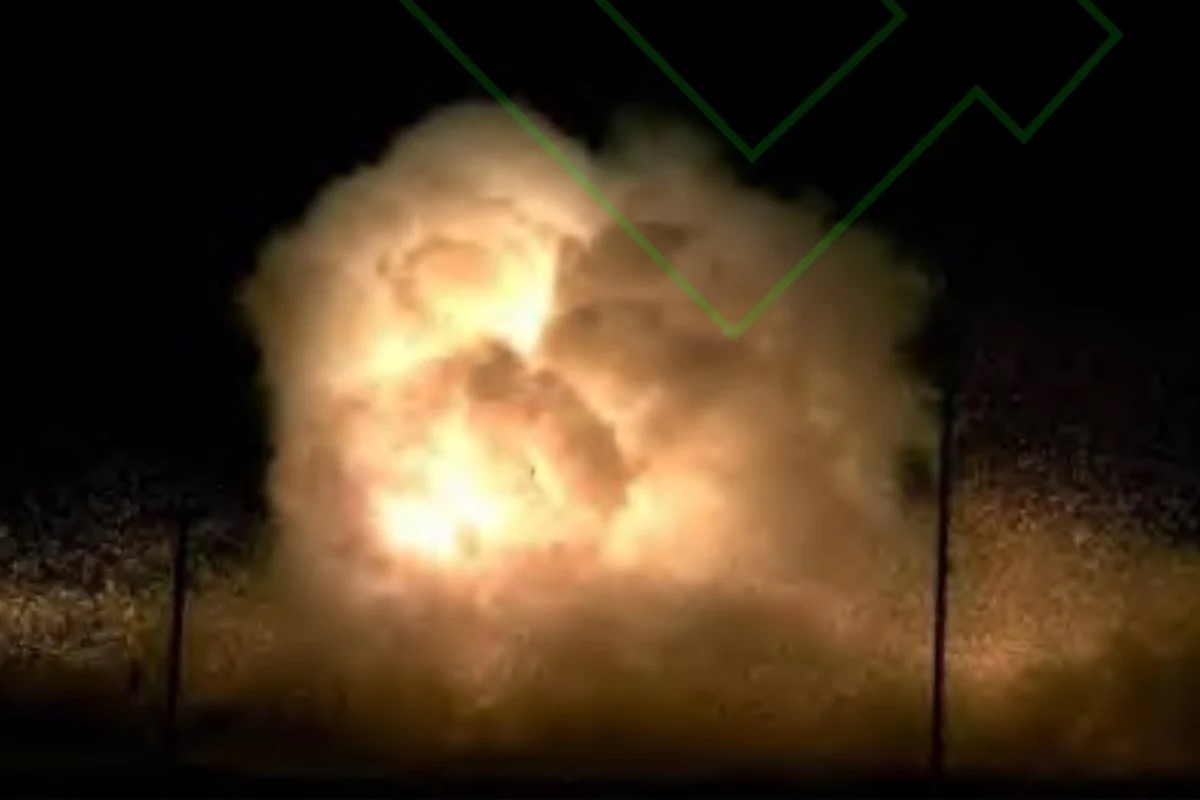PICTURED: Ukrainian tanks withdrawing from the eastern regions. Photo credit: OSCE Special Monitoring Mission to Ukraine. CC 2.0.
WASHINGTON D.C., April 15th, 2021. Recent statements and executive actions across the west this week have officially landed the world as close to nuclear war as it has been since the end of the Soviet Union.
On Thursday, President Biden signed an executive order establishing a National Emergency over the “unusual and extraordinary threat to the national security, foreign policy, and economy of the United States posed by specified harmful foreign activities of the Government of the Russian Federation”.
Pursuant to this executive order was the imposition of a new level of economic sanctions targeting Russian sovereign debt that bars U.S. financial institutions from purchasing new ruble and non-ruble-denominated bonds, as well as financially embargoing individuals alleged of carrying out cyber attacks on the U.S. during the 2020 elections, and even bringing up the debunked story of Russians paying bounties on American GIs in Afghanistan.
The State Department announced that 10 diplomats of Russia’s bilateral mission in the United States had been expelled from the country.
NATO issued a declaration of support for the White House’s actions, and stated that the Kremlin must “cease its provocations and to immediately de-escalate tensions on Ukraine’s borders and in illegally-annexed Crimea”.
A legitimate risk of war
Biden wasted no ink airing his administration’s grievances, which the expert in Russian/NATO reporting, Rick Rozoff described as “near-apocalyptic language”.
Biden accused Russia of “efforts to undermine the conduct of free and fair democratic elections and democratic institutions in the United States and its allies and partners; to engage in and facilitate malicious cyber-enabled activities against the United States and its allies and partners; to foster and use transnational corruption to influence foreign governments; to pursue extraterritorial activities targeting dissidents or journalists; to undermine security in countries and regions important to United States national security; and to violate well-established principles of international law, including respect for the territorial integrity of states”.
This week Moscow moved two armies and three airborne forces to the western border of the country. Russian Defense Minister Sergei Shoigu stated: “The troops have manifested complete preparedness and the ability to perform their duties to guarantee the country’s military security. At the present time, these units are involved in exercises”.
This came only two days before Rozoff reported the warnings, publicly-stated by senior Ukrainian official Leonid Kravchuk, which threatened the Kremlin with World War III should they attempt to breach the border of eastern Ukraine’s Donbass Region.
“The comments all but threatening a third world war, in the modern era inevitably a nuclear one, were not off-the-cuff casual remarks by a minor bureaucrat,” Rozoff says of Kravchuk, “but were those of a person who can fairly be described as the founder of the Ukrainian nation”.
Kravchuk said:
“A citizen, a patriot, and a warrior are all part of one. And today I see how people’s awareness is rising in many regions, where people are starting to say that we need to be ready for anything. By saying so, I want to convey to Russia so that they realize, so that the Kremlin realizes, that it will be no parade. If they dare, if they turn insane and go to war against Ukraine, this will mark the start of a large-scale conflict that could escalate into World War 3. It will be no easy movement, as they experienced in Crimea.
Ukrainian President Volodymyr Zelensky approved Kiev’s recent national security strategy, which includes subjugating the self-declared independent republics of Donetsk and Luhansk, and even assaults against Crimea, all three actions being more than capable of triggering a Russian invasion, meaning they have both the plan, and expectation, of potentially starting a war.
PICTURED: Ukrainian President Volodymyr and former, coup-installed, President Arseniy Yatsenyuk Photo credit: Mykhaylo Markiv, CC 4.0. and Arbeitsbesuch Ukraine. CC 2.0.
The spark that lit the long fuse
Rozoff in an earlier piece, rightly compares the situation to the Sarajevo events, including the assassination of Archduke Franz Ferdinand, that launched World War I. Back then, the economic and cultural blooming occurring across Europe as technology and trade flourished unabated with the rise of steam and combustion travel, gave the citizens of the time the illusion that no government could possibly throw away such sustained development with chaotic, destructive war.
But not only does history show the crown heads were more than willing to throw it all away — in what became perhaps the worst tragedy in human history, they were willing to throw it away on what Otto Von Bismarck described as “some damn foolish thing in the Balkans,” paired with nothing more than signatures on defense treaties, and the concept of a nation’s honor.
The same occurred after World War II, after the Nuclear Age dawned and the Cold War began, when it became increasingly obvious that once again, technological and historical circumstances meant that not only must there not be a World War III, but that there perhaps couldn’t be, as the H-bomb forever made the costs too high.
But why is eastern Ukraine, with its decaying industrial infrastructure and aging population, the site for the next “damn foolish thing”? Why have Sec. of Defense Austin and President Joe Biden communicated “the United States’ unwavering support for Ukraine’s sovereignty and territorial integrity in the face of Russia’s ongoing aggression in the Donbass and Crimea,” to Kiev?
LUHANSK, Ukraine. April 16th, 2014. PICTURED: Barricades erected in the street of Luhansk by ethnically-Russian Ukrainians in opposition to the takeover of the government. Photo credit: Qypchak. CC 3.0.
Former CIA chief of the Soviet Foreign Policy Branch and deliverer of the President’s Daily Brief during the Regan Administration, Ray McGovern, perfectly summarizes the reason why the Pentagon/White House stake in both Kiev’s NATO aspirations and territorial sovereignty is being defended which such dire rhetoric.
Feb. 4, 2014: Amid rioting on the Maidan in Kiev, YouTube carries Assistant Secretary of State Victoria Nuland’s last minute instructions to U.S. Ambassador to Ukraine Geoffrey Pyatt regarding the U.S. pick for new Ukrainian prime minister, Arseniy Yatsenyuk (aka “Yats”) and other plans for the imminent coup d’etat in Kiev. She also says that Vice President Joe Biden will help “glue this thing together”, meaning the coup.
Feb. 23, 2014: President Vladimir Putin returns to Moscow from the winter Olympics in Sochi; confers with advisers about Crimea… to arrange a plebiscite to let the people of Crimea, most of whom strongly opposed the coup regime, decide their own future.
March 16, 2014: The official result from the voters in Crimea voted overwhelmingly for independence from Ukraine and to join Russia. Following the referendum, Crimea declared independence from Ukraine and asked to join the Russian Federation. On March 18, the Russian Federal Assembly ratified the incorporation of Crimea into Russia.
Author of 10 books and senior fellow at the Cato Institute in Washington, Ted Carpenter, recently appeared on a radio interview in which he outlines why the problems in eastern Ukraine are not as they are portrayed in mainstream reporting: namely that the violence in Donetsk and Luhansk is being perpetrated by “pro-Russian separatists,” as they’ve often been called.
Instead these are ethnic Russians, says Carpenter, who were stuck on the wrong side of the border after the dissolution of the Soviet Union, and who believed that the incoming “Yats” presidency would relegate them to second-class citizenry. Carpenter details how their concerns were immediately justified with a Ukrainian language law, banning Russian use in service industries, and appointing a committee to ban Russian language books.
Their designs for independence from Ukraine and hitching up with Russia actually failed, as a plebiscite vote to secede from the former and give their territory to the latter was ignored by Vladimir Putin, who later offered an express immigration process, of which hundreds of thousands of ethnically-Russian Ukrainians have availed themselves of.
The situation is vast and complicated, but both Western leaders and the Kremlin would have it simple. Their policies can both be summarized by the words addressed from Sergei Lavrov to then-Ambassador to Russia, William Burns, famously revealed by Wikileaks in an email, and which detailed the Kremlin’s view of Kiev’s NATO aspirations.
“Nyet means nyet”.
